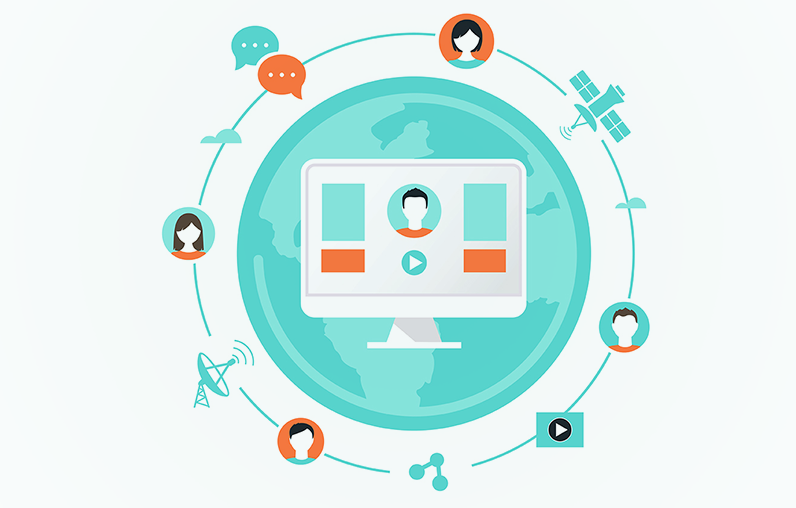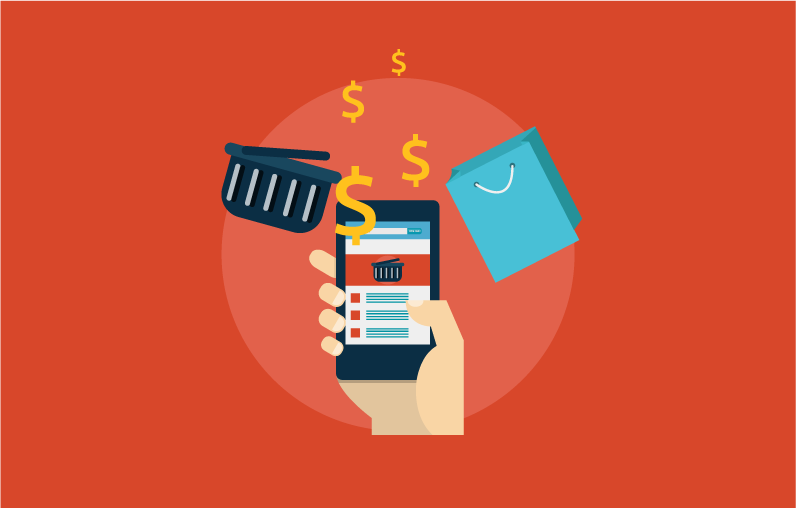
by Aubrey Mellos | Feb 23, 2018 | Blog
Guest Blog from our Partners at ExpoLogic
Sessions make up a significant part of your event’s agenda and can be a deciding factor for attendees when choosing to come to your event. It is important to select sessions that are exciting, interesting, and engaging to ensure your event’s success.
But how do event organizers know what sessions attendees are interested in and what topics they find relevant?
Tracking session attendance is an easy and accurate way to gather attendee feedback and translate this information to useful data. Feedback from attendees on the sessions offered can be incredibly valuable when it comes to planning a successful event and deciding how to make the attendee experience more meaningful.
Here are 5 reasons why you should start tracking session attendance at your next event:
- Understand your attendee’s interests – Tracking session attendance gives event organizers important insight on what topics their attendees find interesting and captivating. Session tracking data identifies how many people enter a session, leave a session, and how long they spent in the session. This data can be analyzed and used when selecting session topics and speakers for future events.
- Award education or professional credits – Identifying the amount of CEUs or CMEs to award session attendees is no longer a challenge when using session tracking technology. Event organizers can accurately report this information with the data obtained from the session tracking technology.
- Measure your investment – Understanding which sessions your attendees are spending the most time in allows you to better measure the investment made on speakers and session material. Session tracking data can be used to evaluate which topics, speakers, and overall sessions are popular with attendees and if they are worth bringing back again in the future.
- Focus on your event budget – Event organizers can better plan their budget with the data provided from tracking session attendance. If sessions are empty or attendees are consistently leaving early, remove these sessions from your agenda and use the funds in other areas to help improve your event.
- Adjust sessions to improve future events – Session tracking data provides details about attendees that can help organizers when planning an event. Information such as number of unique attendees and average dwell times can measure the level of attendee interest for each session letting you plan more efficiently. For example, a session with higher attendance rates can be designated to a larger room to better accommodate the demand.
If you aren’t tracking sessions at your event, you are missing out on valuable information that could help improve your event. Start tracking sessions and use this information during the event planning process. Session tracking data can help you create a well-planned agenda with engaging speakers and session topics that attendee’s will be excited to participate in.
To learn more about how to get started, visit www.expologic.com/session-tracking-expo-logic.

by Rich Finstein | Feb 9, 2018 | Blog
Last year was a period of great movement with technology providers within our community. There was an increase in merger and acquisition activity as organizations sought to extend their presence and gain strategic advantages and market share. While some may tout that bigger is always better when it comes to technology, there is a flipside to the equation. Some mergers or acquisitions do in fact work out very well for the customer however there are others that primarily benefit the company.
I began thinking about all the examples of where bigger or well-funded is not better. One service I and many others use on a weekly basis is dry cleaning. Several years ago Zips, the well-funded, national cleaners came up with a new pricing plan where they were going to charge the same low fee for every garment and promise same day service. Hearing this, I left my local cleaners, the one I went to for years, whose name literally is “Cleaners” to try this new concept. After all, Zips had a big presence; they were growing and seemed to offer great value.
After being with Zips for six months, I just recently returned to my local option. Zips always had long lines, they damaged some of my clothes, and the staff changed often. I never got to know them or build trust. In the end, it cost me more and I was treated like a number, not a loyal, valued customer. Returning to “Cleaners” I now get in and out quickly and my clothes are nicely cared for and returned in great condition. Not to mention, I am greeted with the same friendly face each time I return.
So what does dry cleaning have to do with technology? Not much really… except that for associations, trust, understanding, and continuity are significant factors when choosing a strategic partner. The best technology option is the company that allows you to successfully meet your objectives.
When considering a new LMS technology partner, be sure to ask meaningful questions such as:
- What percentage of your budget goes into the development of your software or services vs sales, marketing or distribution to shareholders?
- How would you define your company culture? Will the people I am speaking with today, who are making promises, be here tomorrow?
- What challenges are you currently addressing? How does your solution make my organization better?
- Have you recently been involved in a merger or acquisition? Can you describe how this will affect your current product or service offerings?
We have seen examples when mergers occur, the people you built trust with are gone and the platform or solutions you are invested in are no longer evolving. At CommPartners we have grown organically and with a shared purpose with our staff and extended community. We believe strongly in a culture of responsiveness, centered on the client.
Yes, many mergers or acquisitions, when handled well can greatly benefit the client and simply makes sense. However to say in all cases that bigger is better is just not true. Thank you “Cleaners” for always being there. Sorry I was swayed by bigger is always better.

by Aubrey Mellos | Jan 4, 2018 | Blog
The truth is that all subject matter experts don’t always make great speakers. Additionally, some people can deliver a killer in-person presentation but fall short when presenting to a virtual audience. We’ve compiled a few webinar presentation tips that will help ensure that your webinar speakers are equipped to deliver an amazing and memorable presentation experience:
Our Top 6 Webinar Presentation Tips for Speakers
- Deliver on the expectations of the learner – provide solutions, education, and inspiration. Leave your attendees with key takeaways and action items. But be sure to make it entertaining – tell stories, speak to personal experiences, include video or bold imagery. Case studies or real-world scenarios also work really well to help illustrate points.
- Encourage speakers to have personality and add energy. It can sometimes be awkward when you have to present to your computer screen and you don’t have an in-person audience to infuse natural energy. Consider having another person in the room so the speaker feels like they are talking to an audience. Standing up to present (with the right headset to ensure audio quality) can also help ease a presenter who is more used to in-person events.
- Speak the language of your audience. When preparing your webinar presentation, know who is on the webinar – their role, industry, department, etc. If you have a varied audience, that is okay, but be sure to acknowledge that on the live webinar and set the expectation that some of the content may not be completely applicable. This is also a great way to encourage post-event follow-up if you are unable to address specific audiences.
- Remove the fear of presenting. Presenting can be scary and doesn’t always come naturally. Layer that with a presenter that isn’t all that tech savvy and we may have a recipe for disaster. Consider having another voice to help moderate and make the presenter more comfortable. Always have a training session on the technology before the live presentation to reduce fears about how the webinar platform works, or consider hiring an event production company so that presenters can simply focus on delivering content. Lastly, always do a thorough sound check – bad audio can ruin the best presentation.
- Create a slide deck that encourages engagement. The following list includes our favorite tips on how to prepare a webinar presentation slide deck that people will pay attention to:
- Include polls, breaks for questions, or even encourage attendees to openly use the chat window to share ideas. If the speaker is comfortable they may even address some comments on the live webinar.
- Know the flow of the presentation and your story.
- The webinar should address ONE thing. Don’t try to cram too much into a webinar, you will lose your learner and will simply run out of time.
- Avoid cobbling together a presentation from old decks – start with the narrative first, then build the presentation.
- Leave time at the end for questions and conversation. This can be a great way to infuse the participants own personal experiences around the topic.
- Rehearse – but not too much! Know your narrative in and out, but don’t rehearse to the point that the delivery feels rigid. Rehearsing will also help boost the confidence of the presenter. Comfortable, interactive, and confident speakers top the list of how to ensure your next webinar will be a success.
Need Help Managing Your Webinars?
As a webinar production company, CommPartners has 25 years of experience helping to enhance and advance our clients webinars. We hope these webinar presentation tips will help your speakers deliver an outstanding and memorable learning experience! If you’re looking for someone to manage your webcasts, fill out our online contact form or give us a call at (800) 274-9390 to see how we can help.
Want to talk about how you can take your webinars to the next level? Explore our learning management system, Elevate. Give Meghan a call at 443.539.4851 or email mgowen@commpartners.com for more information.

by Rich Finstein | Nov 13, 2017 | Blog
At the 2017 Higher Logic Super Forum, I along with an association colleague, facilitated a session on the virtues of developing an integrated approach for bringing together online community engagement and an LMS in a single offering. During the session, we discussed how associations typically have these areas configured as unique components. In reality, both provide opportunities for learning. Since an online community engagement strategy is usually focused on facilitating peer collaboration, and the learning management system (LMS) provides expert content, it’s natural they come together to support the stakeholder experience in a synergistic way.
A key connector in this relationship are live online events and webinars. Traditionally, live events and webinars have been positioned on their own through a registration and authentication page provided by the webinar vendor or a separate catalog of programs. A better, more engaging approach is to promote and provide access to these events within a private community.
Here are 5 considerations for using live, online events and webcasts to increase the impact of your online community engagement strategy:
- Registration will feel like a continuum of existing collaboration. Participants who have already been invested in the topic can now be encouraged, in an intuitive way, to take the step to register and participate in online discussions.
- Participation from new and non-engaged members is encouraged with an integrated approach. Live, online events and webinars are tangible ways to draw participants to specific areas of your Web presence. Offering them through a dedicated part of your LMS gives users a reason to create a profile and begin to participate in other social learning and online community engagement opportunities.
- Leverage interaction before and after an online event or webcast. Participants should be able to see who is attending, exchange ideas, and engage the presenters before the event. Afterward, users can continue any conversations that may have been cut short (which happens often!) during an hour program.
- Integrate results from live event and webinar attendance with other participation metrics, providing a complete picture of online community engagement. Host organizations will appreciate having a central repository to evaluate participation outcomes.
- Award badges or ribbons for participation or achievement from webinars in the same area where recognition is provided for other activities. Providing recognition will further encourage participation in future live, online events.
We see webinars and live events becoming much more collaborative and transparent. Bringing them into your online community is a natural way to build participation and provide synergy with your other educational objectives.
If you have interest in learning more about integrating events and webinars with your community contact us online, or email Meghan Gowen at mgowen@commpartners.com.

by Aubrey Mellos | Oct 18, 2017 | Blog
When considering how to monetize your learning, it is important to have a clearly defined and executed business strategy that properly aligns with your Learning Management System. Organizations often think of the LMS as simply the container and delivery site for their online programs. While this is true, if a goal is to make these programs profitable, it’s important to articulate and execute a revenue-generating online learning management strategy.
Here are six considerations to help ensure your e-learning programs are profitable:
Six Tips to Make Your Online e-Learning Program Profitable
1. Build a Knowledge Community vs. a Catalog of Opportunities
The LMS has evolved from a quiet presence within an organization’s website to a full-blown knowledge community that supports and integrates live and on-demand content in many forms. Be sure to incorporate social learning and peer to peer exchanges within your online e-learning platform to increase traffic and build a true knowledge community.
2. Provide Meaningful, Diversified and Relevant Content
Think of your LMS as an online learning store. Having an interesting array of content, create complementary offerings that range from free to high priced, high value. Attractively display your online content to satisfy a wider range of stakeholders’ needs and budgets.
3. Offer Individual Subscriptions & Pre-Payment
No one likes to take out their credit card and make a payment. Have your community pre-commit for access to your entire online e-learning platform, or a portion of this content through a subscription or package of programs. Make subscription purchases financially attractive.
4. Support Group Purchasing or Group Subscriptions
The easiest way to increase users of your online e-learning platform is to have all employees of an organization have access to your content. Engaging a single purchaser for many participants is a nice way to supplement individual purchases.
5. Integrate Online Learning with Other Organization Initiatives
Create loyalty by extending LMS discounts or assigning a pre-paid balance for online learning opportunities as a reward for investment in an organization. This could include a membership renewal or participating in an onsite conference.
6. Have an Attractive and Simple Shopping Cart Experience
Ensure your process for selection and payment of online learning is simple and intuitive. If you are integrating with an external database or AMS for purchases, make sure there is no visual or programmatic disconnect between the two programs.
Like any business, it takes an entrepreneurial approach to generate the returns you are hoping to receive. Investing time in the right online learning platform and having a successful strategy will help ensure a successful ROI.
Contact Us About Your e-Learning Needs
Whether you are considering investing in an LMS or simply looking to expand your organization’s e-learning strategy, CommPartners can help you create quality educational experiences that engage and inspire the learner. Fill out our online contact form or give us a call at (800) 274-9390 to learn how we can help.






